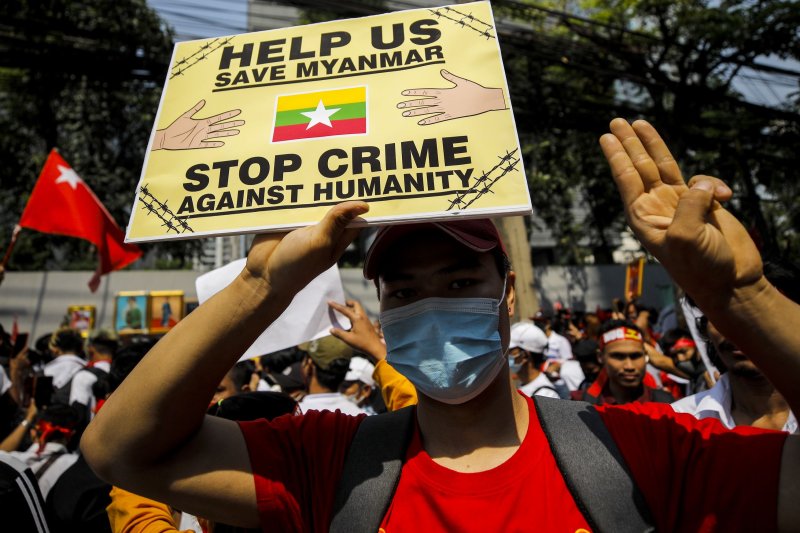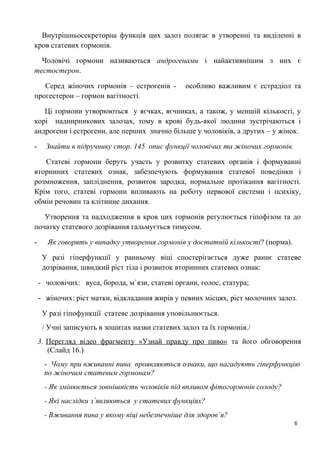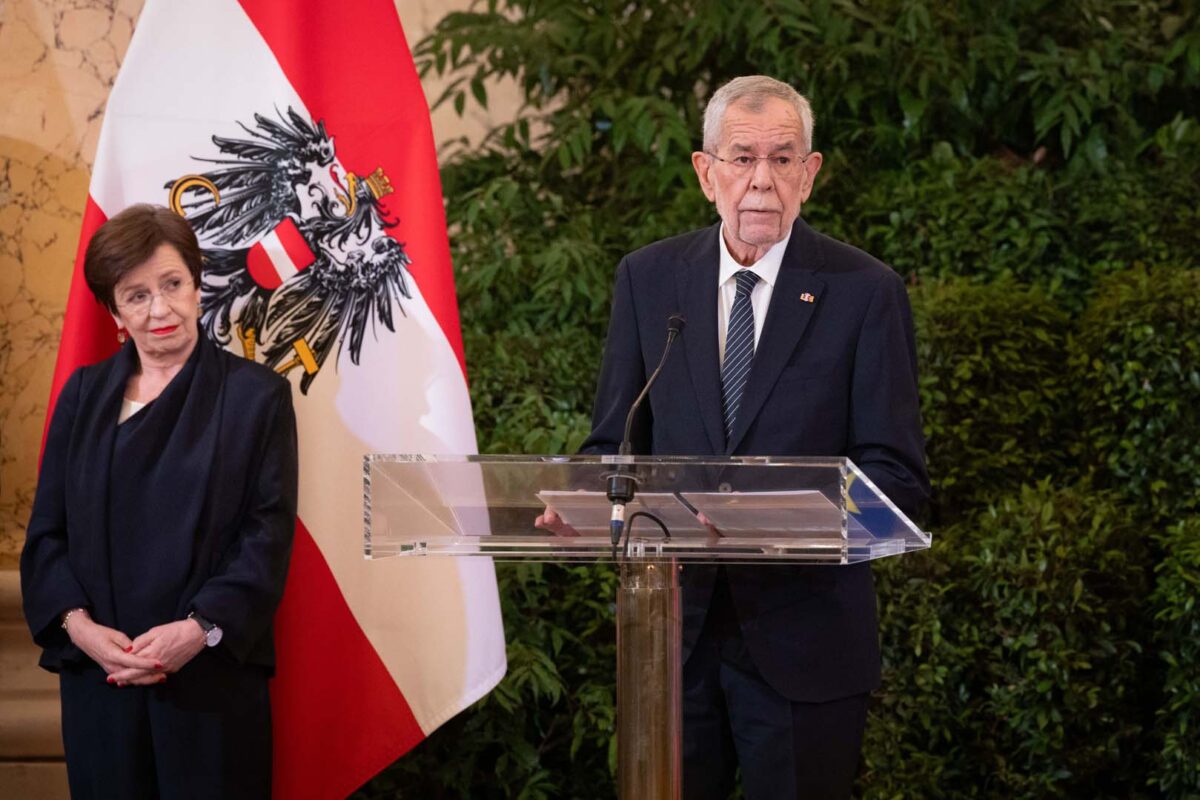Myanmar Sanctions: A Comparative Analysis Of UK And Australian Policies

Table of Contents
Scope and Target of UK Sanctions
The UK's Myanmar sanctions regime is multifaceted, employing both financial restrictions and import/export controls to pressure the military junta.
Financial Sanctions
The UK's primary financial sanctions against Myanmar focus on freezing the assets and prohibiting transactions with individuals and entities directly linked to the military regime. This includes:
- Specific individuals: The UK regularly updates its sanctions list, targeting key figures within the Tatmadaw (Myanmar's armed forces), including senior generals, commanders responsible for human rights abuses, and those profiting from the junta's actions.
- Military-owned businesses: Significant restrictions are imposed on dealings with entities like Myanma Economic Holdings Ltd (MEHL), a powerful military conglomerate controlling vast sectors of the Myanmar economy. This aims to cut off vital financial resources for the junta.
Effectiveness analysis: While asset freezes and transaction bans can severely impact the financial capabilities of targeted individuals and entities, their effectiveness depends on robust enforcement and international cooperation. Challenges include the junta's ability to utilize offshore accounts and complex financial networks to circumvent sanctions. Moreover, the overall economic impact of financial sanctions on the junta remains a subject of ongoing debate and requires further research.
Import/Export Restrictions
Complementing financial sanctions, the UK has imposed targeted import and export restrictions on goods linked to the military's activities or human rights violations. Examples include:
- Timber imports: Bans on timber imports aim to curb the junta's revenue stream from the logging industry, often linked to environmental destruction and human rights abuses.
- Arms and related materials: Strict controls are in place on the export of arms and related materials to Myanmar, preventing the junta from accessing equipment that could further fuel the conflict.
Effectiveness analysis: Import/export controls can successfully limit the military's access to crucial resources, but their effectiveness is contingent on the cooperation of other nations and the existence of robust monitoring mechanisms to prevent smuggling and circumvention. The impact on the military's operations and the overall economy needs further investigation.
Scope and Target of Australian Sanctions
Australia's response to the Myanmar crisis mirrors some aspects of the UK's approach but also incorporates unique elements.
Travel Bans and Visa Restrictions
Australia has actively employed travel bans and visa restrictions against individuals implicated in human rights abuses or associated with the military regime. This aims to isolate perpetrators and restrict their international mobility.
- Examples: Australian sanctions lists include individuals identified as key players in the coup, those responsible for atrocities against the Rohingya population, and other figures deemed complicit in human rights violations.
- Effectiveness analysis: Travel bans can be symbolically significant, sending a strong message of condemnation. However, their effectiveness in directly altering the behavior of sanctioned individuals is debatable, especially when alternative travel routes or jurisdictions are available.
Financial Sanctions and Targeted Embargoes
Similar to the UK, Australia has implemented financial sanctions and targeted embargoes against entities and individuals linked to the military junta.
- Examples: These sanctions target specific businesses, individuals, and organizations identified as benefiting from the junta's actions or facilitating human rights abuses.
- Effectiveness analysis: A direct comparison with the UK's approach reveals a similarity in the types of sanctions used. However, the specific targets and the intensity of enforcement may differ, impacting the overall effectiveness of the sanctions. Further comparative research is needed to fully assess the relative impact of both countries' financial sanctions.
Comparative Analysis of UK and Australian Approaches
Both the UK and Australia have adopted a multi-pronged approach to sanctions against Myanmar, but several key differences exist.
Similarities and Differences
- Similarities: Both countries utilize financial sanctions, including asset freezes and transaction bans, targeting individuals and entities linked to the Myanmar military. They also employ targeted import/export restrictions, focusing on sectors implicated in human rights abuses or funding the junta. Both operate under robust legal frameworks underpinning their respective sanctions regimes.
- Differences: While both regimes target military-linked individuals and entities, the specific individuals and entities sanctioned may vary. Australia's emphasis on travel bans is more prominent than the UK's. Enforcement mechanisms and levels of international collaboration may also differ, impacting the overall effectiveness.
Effectiveness and Impact
Evaluating the effectiveness of these sanctions is complex and requires a multifaceted approach.
- Challenges: Assessing the impact is challenging due to limitations in data availability and the complexity of the Myanmar economy. The junta’s capacity to adapt and circumvent sanctions poses a significant obstacle.
- Metrics: Success could be measured by observing changes in the junta's financial resources, reductions in human rights abuses, or progress towards a democratic transition. However, disentangling the effects of sanctions from other factors influencing the situation in Myanmar presents a major analytical hurdle. Unintended consequences such as economic hardship for the civilian population must also be considered.
Conclusion
This comparative analysis of UK and Australian Myanmar sanctions reveals both similarities and key differences in their approaches. While both countries aim to pressure the military junta and protect human rights, the specific targets, mechanisms, and potential impacts vary. Further research is needed to fully assess the long-term effectiveness of these sanctions and to explore potential improvements in coordination and implementation. A deeper understanding of Myanmar sanctions and their implementation across different jurisdictions is crucial for effective international pressure on the Myanmar regime. Further analysis of these Myanmar sanctions is vital to develop more effective strategies to promote peace and democracy in Myanmar.

Featured Posts
-
 Uks Rarest Wildlife Facing Extinction Due To Wildfires
May 13, 2025
Uks Rarest Wildlife Facing Extinction Due To Wildfires
May 13, 2025 -
 Government Advisory Delhi Faces Extreme Heat Heatstroke Risk High
May 13, 2025
Government Advisory Delhi Faces Extreme Heat Heatstroke Risk High
May 13, 2025 -
 Community Highlights Earth Day May Day Parade And Junior League Gala
May 13, 2025
Community Highlights Earth Day May Day Parade And Junior League Gala
May 13, 2025 -
 15 Year Old School Stabbing Victims Funeral Service
May 13, 2025
15 Year Old School Stabbing Victims Funeral Service
May 13, 2025 -
 Live Stream Duke Vs Oregon Ncaa Tournament Game Where To Watch
May 13, 2025
Live Stream Duke Vs Oregon Ncaa Tournament Game Where To Watch
May 13, 2025
Latest Posts
-
 Pregnant Cassie And Alex Fines Red Carpet Debut At Mob Land Premiere
May 13, 2025
Pregnant Cassie And Alex Fines Red Carpet Debut At Mob Land Premiere
May 13, 2025 -
 Diddy Sex Trafficking Trial Cassies Husband Alex Fine Offers Support
May 13, 2025
Diddy Sex Trafficking Trial Cassies Husband Alex Fine Offers Support
May 13, 2025 -
 Oleksiy Poroshenko Ostanni Vidomosti Pro Yogo Zovnishnist Ta Diyalnist
May 13, 2025
Oleksiy Poroshenko Ostanni Vidomosti Pro Yogo Zovnishnist Ta Diyalnist
May 13, 2025 -
 Oleksiy Poroshenko Aktualna Informatsiya Pro Yogo Mistseznakhodzhennya Ta Zhittya
May 13, 2025
Oleksiy Poroshenko Aktualna Informatsiya Pro Yogo Mistseznakhodzhennya Ta Zhittya
May 13, 2025 -
 Scho Vidomo Pro Oleksiya Poroshenka U 2024 Rotsi
May 13, 2025
Scho Vidomo Pro Oleksiya Poroshenka U 2024 Rotsi
May 13, 2025
